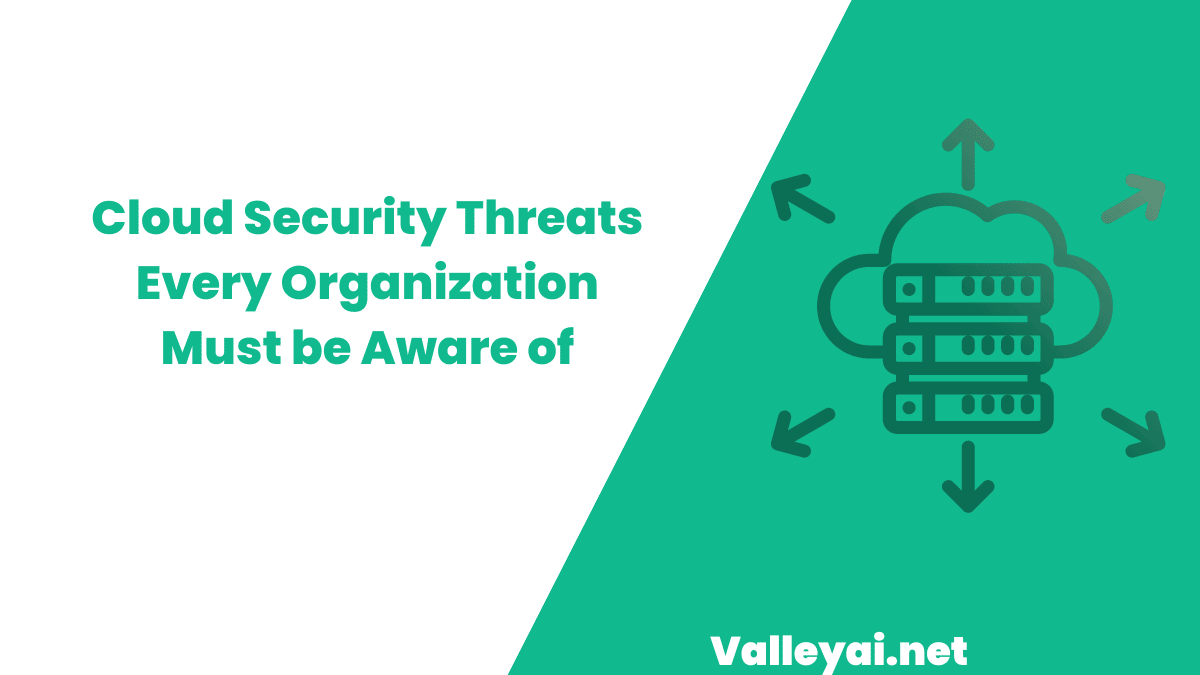In this digital age, organizations are becoming more and more reliant on cloud technology for their operations than ever before.
But with cyber-attacks becoming more sophisticated and frequent, it’s crucial for businesses to understand the cloud security threats that could potentially harm their operations.
In fact, the very survival of a business could depend on how well they are prepared to tackle these threats.
So, if you’re an organization using the cloud, it’s time to take a closer look at the security threats and take proactive steps to remediate any vulnerabilities your organization might have in its cloud infrastructure.
In this blog post, we’ll discuss why cloud security is important and explore the top five cloud security threats that every organization must be aware of.
We will also provide actionable tips on how to mitigate these cloud security threats.
Ready to learn? Let’s get started!
Key Takeaway:
- Cloud security is not just an IT issue but a business issue as well. The risks associated with cloud security breaches can have a significant impact on an organization’s reputation, financial stability, and overall success.
- Since cybercriminals are continuously finding new ways to exploit vulnerabilities in cloud infrastructure, it’s crucial to remain vigilant and proactive in protecting your organization’s data and assets.
- This means investing in a robust security strategy that encompasses both prevention and detection measures.
- And most importantly, fostering a culture of security awareness and education within your organization.
Why Cloud Security is Important?
Cloud has become an integral part of modern organizations.
As more and more organizations move their data and applications to the cloud, it’s critical that they stay on top of emerging cloud security threats.
Cybercriminals are already using various advanced techniques such as phishing, hacking, social engineering, and launching malware attacks to gain unauthorized access to sensitive data stored in the cloud.
This, in turn, can easily lead to data theft, financial losses, and reputational damage to an organization.
To avoid such consequences, organizations must implement strict cloud security measures, controls, and policies to safeguard the data and applications stored in their cloud.
Top 5 Cloud Security Threats to Look Out For
Now that you know the importance of cloud security, let’s look at the top five cloud security threats that every organization must watch out for to avoid becoming the next victim of a cyber attack.
1 – Cloud Misconfigurations
Cloud misconfigurations are one of the top cloud security threats for organizations worldwide.
A research study conducted by IDC also found that cloud misconfigurations are a primary cause behind 80% of all data security breaches.
The worse part? — Cloud misconfigurations can happen at any stage of the cloud deployment, and there is no one-time cure to prevent these issues. As a result, it could easily lead to data breaches or service outages.
That’s why it’s important for organizations to implement robust cloud security controls, conduct regular assessments, and provide proper training to mitigate cloud misconfigurations.
2 – Improper Access Management
With so many cloud applications, services, and solutions being adopted by organizations, it has become critical to manage who can access this cloud network and who can’t.
While most cloud applications require users to enter valid credentials to access data, sometimes that’s not always enough to protect sensitive business data from getting compromised by unauthorized access.
Simply put, access management is critical to cloud security, and organizations must establish a proper access control policy in place.
One way to implement access control is through Multi-Factor Authentication (MFA).
Using MFA, you can enforce your employees to provide multiple forms of identification before accessing your organization’s cloud resources, making it more challenging for hackers to gain unauthorized access.
3 – Cyber Attacks
Cyber attacks on cloud infrastructure are increasing day by day.
For the uninitiated, a cyber attack is an attempt by hackers & cyber criminals to access a computer or cloud network for the sole purpose of stealing, manipulating, destroying, or exposing business-sensitive information in exchange for ransomware or reputation damage.
Hackers are constantly evolving their techniques and methods to exploit vulnerabilities in cloud systems.
Today, they use a variety of cyberattacks including phishing, malware, DoS, SQL injections, and even IoT-based attacks on organizations all over the world.
To protect against such cyber attacks, organizations must ensure that their cloud service provider has robust security measures in place.
Additionally, they should also implement necessary security measures such as firewalls, and intrusion detection systems, and adopt a Cyber Asset Attack Surface Management (CAASM) solution to fight against cyber attacks.
4 – Insecure APIs
APIs (Application Programming Interfaces) are essential for cloud computing, as they not only allow different cloud services to interact with each other but also customize their cloud experience.
However, APIs can be a serious threat to the cloud security of an organization.
Simply put, if the API of a cloud service or application is not secure, it can be exploited by hackers to gain unauthorized access to cloud resources.
For example, 94% of organizations witnessed an API-related security incident in 2021.
Plus, as your organization’s cloud infrastructure grows with time to provide better services, so do its security risks.
That’s why it is important to identify & mitigate the risk of insecure cloud APIs in your organizations to protect your sensitive information from cybercriminals.
To do this, organizations can consider implementing strict security measures such as API authentication, access control, and encryption to name a few.
5 – Legal & Regulatory Compliance
Compliance with legal and regulatory requirements is essential to strengthening cloud security.
But apart from cloud security, it’s mandatory for organizations to comply with relevant regulations such as GDPR, HIPAA, and PCI-DSS because failure to do so can lead to hefty fines and legal action.
To ensure compliance with legal and regulatory requirements, organizations must achieve and demonstrate legal & regulatory compliance.
This means organizations must isolate a part of their cloud infrastructure and keep it accessible only to authorized employees with a legitimate need to access this data.
FAQs Related to Cloud Security Threats Every Organization Must be Aware of
What are the biggest threats to cloud security?
The biggest threats to cloud security are data breaches, insider threats, misconfiguration, advanced persistent threats, and denial of service attacks.
How can I protect my organization from cloud security threats?
To protect your organization from cloud security threats, use strong passwords and multi-factor authentication, train your employees, encrypt sensitive data, monitor your cloud infrastructure, and consider using a Cyber Asset Attack Surface Management (CAASM) solution.
How do you mitigate cloud security risks?
To mitigate cloud security risks, implement strong Identity & Access Management (IAM), use encryption, monitor your cloud infrastructure, implement network security controls, and conduct regular security assessments.
Admin
My name is Kaleem and i am a computer science graduate with 5+ years of experience in AI tools, tech, and web innovation. I founded ValleyAI.net to simplify AI, internet, and computer topics while curating high-quality tools from leading innovators. My clear, hands-on content is trusted by 5K+ monthly readers worldwide.

